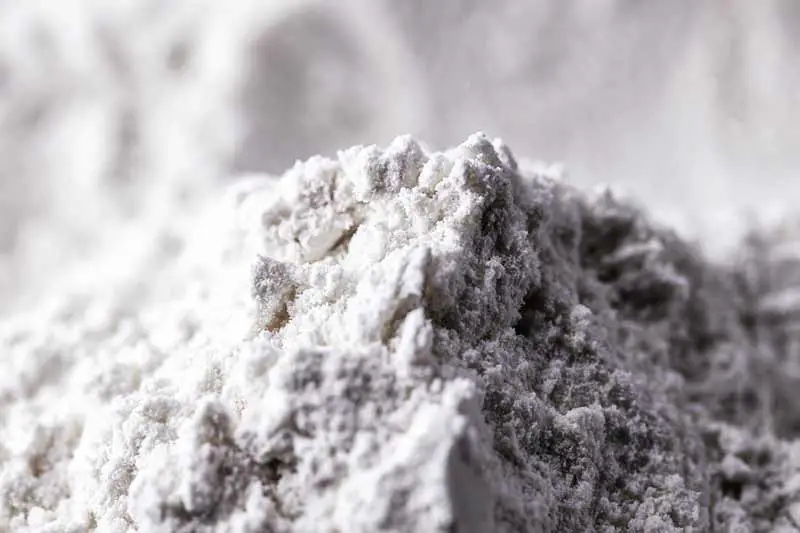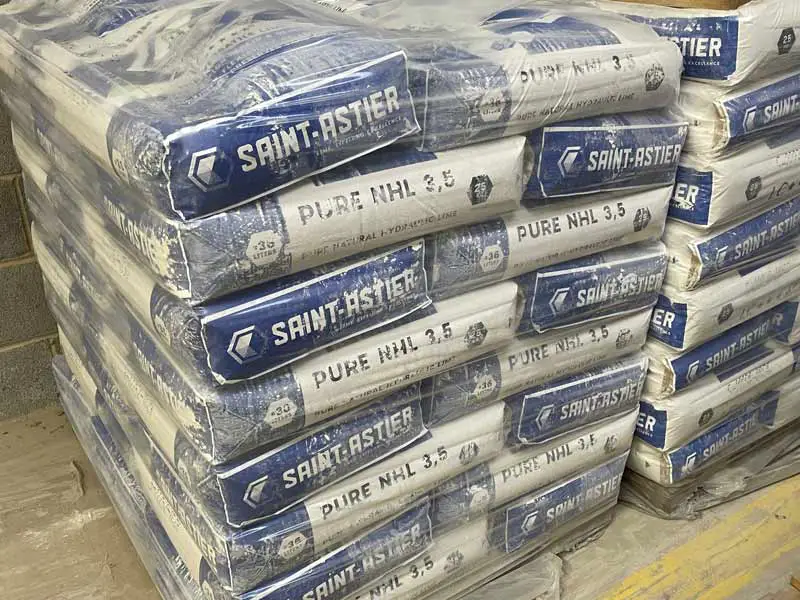
From its beginnings as a building material used by the Ancient Egyptians to its modern-day use in plastering and masonry works, lime has been a construction staple since the dawn of civilization. But with so many types of lime available, how do you know which one is best for your plastering project?
Generally, non-hydraulic limes are best for plastering. This is because they are fattier, which makes for more sticky workable material. Hydraulic limes, specifically NHL 2, can be used for lime plastering in exposed areas or in damp conditions where non-hydraulic limes would not be able to set.
In this article, we’ll explore the different types of lime for plastering and discuss why some are better suited than others.
What is Lime?
Lime is a versatile material that has been used in construction for centuries. It’s made from calcium carbonate-containing rocks, like limestone and chalk, which are heated to extremely high temperatures until it breaks down into calcium oxide and carbon dioxide. This calcium oxide (known as quicklime) reacts with water to form a thick sticky material called lime putty or fat lime.
A common use of lime in construction is plastering walls and ceilings. Lime plaster is a mixture of water, sand, and lime putty, which can be applied to almost any surface to provide an attractive finish. Lime plaster also has several unique characteristics, such as breathability and flexibility, making it ideal for use on old buildings or those that need extra protection from the elements.
In addition to traditional non-hydraulic limes, hydraulic limes are becoming increasingly popular due to their fast setting time and greater strength over non-hydraulic versions. Hydraulic limes are ideal for areas that require rapid curing times but still need a strong bond between the substrate and the plaster coatings.
Overall, many types of lime are available depending on your project needs. Non-hydraulic limes offer enhanced breathability, while hydraulic limes offer faster curing times and greater strength properties. It’s important to note that plaster should never be a stronger or harder material than the substrate it’s applied to; this can cause extensive damage over time.
Types of Lime for Plastering
When it comes to plastering walls and ceilings, you’ve got plenty of options for the type of lime you use. Non-hydraulic limes are ideal for projects that require greater breathability but may take a little longer to set. Hydraulic limes, on the other hand, offer a fast setting time and a stronger cured material than traditional non-hydraulic limes.
Both have advantages and disadvantages, so choosing the right type of lime for your project is important. If in doubt, always go for a non-hydraulic lime, which is the most breathable and flexible. Hydraulic limes should be used in damp or exposed conditions where a quicker set time is important.
The Benefits of Using Lime for Plastering
Using lime for plastering offers many benefits. Lime has been used as a building material for centuries, and its popularity continues today due to its many advantages. Lime is a naturally occurring material, meaning it’s sustainable and eco-friendly, making it a great choice for those looking to build in an environmentally conscious way.
Lime plaster also has excellent breathability and can absorb moisture from the air, reducing condensation in your home, which can cause damp and mould. This is especially useful in areas with higher humidity levels, such as bathrooms or kitchens.
Another benefit of lime plaster is that it will most likely last longer than cement-based plasters, giving your walls an extra layer of protection against the elements! Overall, using lime for plastering provides many benefits, making it the ideal choice for any project!
Related article: How Many Coats of Lime Plaster is Best?
Non-Hydraulic Lime Putties or Fat Limes
Non-hydraulic lime putties are becoming increasingly popular in the plastering industry due to their breathability, flexibility, and luxurious finish. Unlike hydraulic limes, which contain clay and other additives to help them harden faster, non-hydraulic limes don’t contain any additives. They make a very plastic and workable plaster with natural breathability and flexibility.

Non-hydraulic limes take longer to harden than hydraulic limes because they cure via carbonation instead of hydrolysis. Carbonation is the process of the lime absorbing carbon dioxide out of the air to set. This slow process will usually take around 1 day per mm of plaster thickness in good conditions.
Non-hydraulic limes are the gold standard for plastering. The only time that can’t be used is if the area is constantly damp – which won’t allow carbonation to take place. Or if there are time constraints, for example, bad weather on its way. In these cases, using an NHL 2 hydraulic lime may be better to make your lime plaster.
Overall, non-hydraulic lime mortars and putties offer superior performance when used in plastering applications – perfect for anyone looking for an elegant yet durable finish!
Related article: Can You Get a Smooth Finish With Lime Plaster?
Hydraulic Limes
Hydraulic limes are a great choice for plastering projects requiring quick turnaround time. Unlike non-hydraulic limes, hydraulic limes contain activated materials like clay that react with water to set in a process called hydrolysis. This means they can set underwater, so they are perfect for areas where non-hydraulic limes would not be able to set.

This faster set also means hydraulic limes are harder than non-hydraulic ones. This isn’t usually an issue for a more modern building, but it can be for old ones. A plaster should never be harder than the masonry or substrate it has been applied to. This can cause extensive damage over time. If you’re in doubt, you can always get your masonry tested or just use non-hydraulic lime instead.
Furthermore, since hydraulic limes are harder, they don’t provide the same breathability and flexibility as non-hydraulic limes; they’re better suited for projects that are very exposed to harsh elements. The added strength can be especially beneficial in projects exposed to moisture and extreme temperatures.
Overall, hydraulic limes are great for anyone looking to complete a project quickly without compromising on quality and strength!
Conclusion
In conclusion, it’s important to consider both hydraulic and non-hydraulic limes when deciding which lime is best for your plastering project. While hydraulic limes are great for quick turnarounds and projects that require increased strength, non-hydraulic limes offer superior breathability and flexibility.
Ultimately, the choice boils down to what your project requires. If you need a quick and strong finish, hydraulic limes are the way to go. However, if you’re looking for something more long-lasting that can withstand extreme temperatures or moisture, then it may be better to opt for non-hydraulic limes.

